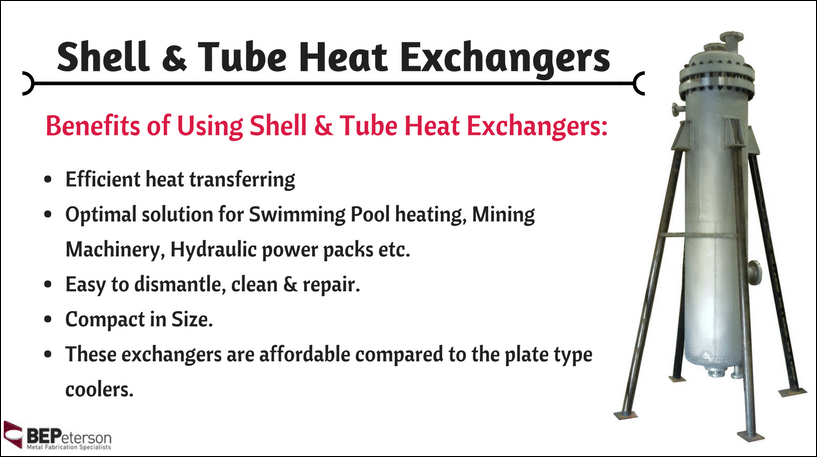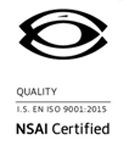Shell and tube heat exchangers are considered one among the most effective type of heat exchangers. These heat exchanges have a cylindrical shell with a bundle of tubes. The tubes are made from thermally conductive materials, which allow heat exchange between the hot fluids flowing outside the tubes and the coolant flowing through the tubes. These heat exchangers offer an optimal cooling solution to different applications including:
- Hydraulic
- Leisure
- Marine
- Rail
- Industrial
Shell and tube heat exchangers are widely used in applications, which require cooling, or heating large volume of process fluids or gases. There are a number of different types of shell and tube heat exchanger designs to meet several process needs in virtually every industry.
Important Parts of Shell and Tube Heat Exchangers
The following are the four most crucial parts of a shell and tube heat exchanger:
-
Tube Bundle: A tube bundle consists of tube sheetsand tubes. The tube bundle is held together by baffles, and tie rods.
-
Shell: The tube bundle is included in a shell.
-
Front Header: A front header, which is also referred to as a stationary header, is the part from where the fluid enters the tubeside of the exchanger.
-
Rear Header: A rear header is a part from where the tubeside fluid leaves the exchanger or where it is returned to the front header.
Why are Shell and Tube Heat Exchangers Used?
Shell and tube heat exchanger is used in various industrial process applications because they can perform tasks such as:
-
Removal of process heat and feed water preheating
-
Cooling of hydraulic and lube oil
-
Cooling of turbine, compressor, and engine
-
Condensing process vapor or steam
-
Evaporating process liquid or steam

Materials Used for Shell and Tube Heat Exchangers
Different materials are used for manufacturing heat exchangers based on the applications. Here are the most frequently used tube side materials:
- Cupronickel Alloys
- Titanium
- Carbon Steel
- Brass Alloys
- Stainless Steel
What Are the Benefits of Using Shell and Tube Heat Exchangers?
Shell and tube heat exchangers are extensively used in a number of industries, particularly in refineries, owing to the various advantages they offer over other heat exchangers:
-
Shell and tube heat exchangers have more heat transfer efficiency.
-
These heat exchangers are an optimal solution for swimming pool heating, mining machinery, hydraulic power packs, etc.
-
These heat exchangers can be easily dismantled. Thus, cleaning and repairing is easy.
-
The heat exchangers are compact in size.
-
The capacity of these heat exchangers can be increased by adding plates in pairs.
-
These exchangers are affordable compared to the plate type coolers.
-
As the pressure test is relatively simple, one can easily locate tube leaks and fix them.
-
These heat exchanger can be used in systems, which have higher operating temperatures and pressures.
BEPeterson is a company, which makes sure that all its processes are carried out and completed precisely. We are well-known for manufacturing shell and tube heat exchanges that meet our customers’ exact requirements. Also, we have a staff of expert and qualified engineers with a good experience who will understand your needs and guide you with appropriate selection. To know more about building customizable shell and tube heat exchangers, you can call us on 5084367900. You can also mail us at sales@bepeterson.com.

